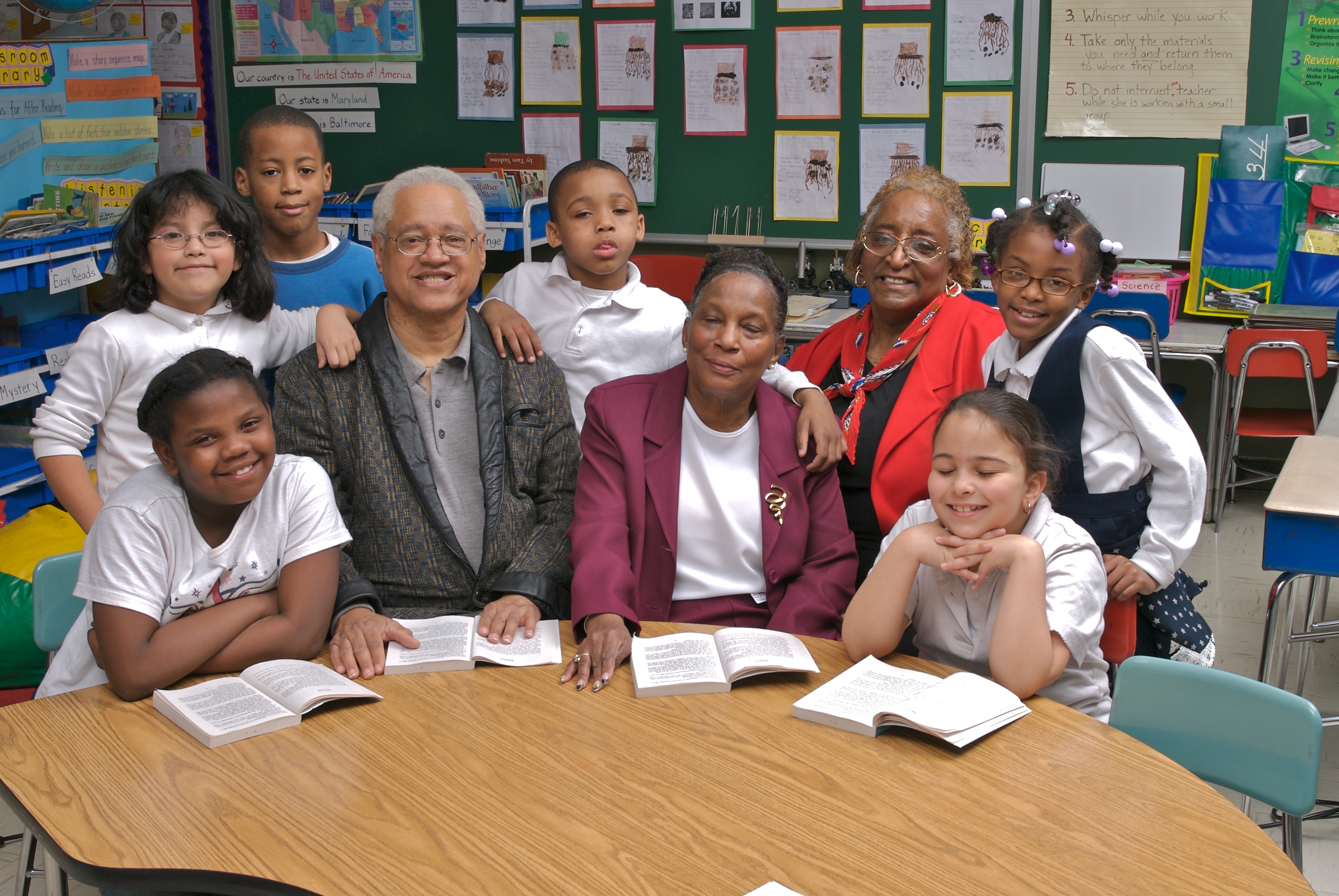First demonstrations
Experience Corps was to be “demonstrated” in five cities: Philadelphia; Minneapolis; Portland, Oregon; Port Arthur, Texas; and the Bronx in New York City. Under the joint leadership of Fried and Freedman, the demonstration took place over two years, 1995-1997, including a six-month planning period in each location followed by an 18-month pilot. Gardner served as chair of the project’s advisory group.
Recruitment of volunteers was difficult. Organizers could not rely on testimonials or word-of-mouth appeals from existing volunteers, as the program was new. Because the project was small and the budget tight, a mass marketing campaign did not fit the bill. It took time to find and persuade older adults to commit 15 hours per week to a program they had never heard of. Each city’s team of organizers developed a range of recruitment tactics.
One helpful approach came from the AARP (formerly the American Association of Retired Persons), a non-profit advocacy group that lobbied on behalf of older Americans, which offered to use its mailing lists to recruit volunteers living in the neighborhoods surrounding the target schools. This focused approach, coupled with the AARP's imprimatur, was successful. In the Bronx, over 200 people applied for 30 posts. Another key to boosting recruitment was the offer of a monthly stipend. For older adults living on fixed and modest resources, these funds made it possible to serve by reimbursing out-of-pocket expenses (bus fare, classroom materials, lunch and the like).

© AARP Experience Corps
Senior volunteers with elementary schoolchildren.
By summer 1995, Experience Corps was slated for a total of 12 schools in the five pilot cities, and by early 1996 volunteers were at work. At that point, evaluation became a priority for Fried and Freedman. Researchers from Johns Hopkins and Civic Ventures, joined by an independent evaluator, made 30 site visits to the demonstration schools. They interviewed program staff, volunteers, children, principals, teachers and other school staff, conducted focus groups, and observed volunteers in the classroom. Using a questionnaire, researchers assessed teachers’ attitudes about having older people help in the classroom, both before and after the pilot. To assess the impact of intensive service, another questionnaire collected self-reported health and wellness indicators from the volunteers.
The results were promising. Teachers noted that kids who had been far behind in reading and math skills were catching up, thanks to the one-on-one attention. The children also benefited from the warm attentions of grandparent figures; many lacked adult affection in their lives. Behavior and attendance improved. Moreover, the senior volunteers were thriving. They reported feeling more purposeful and connected. Indeed, many were so satisfied that they said they were “getting” more than they were “giving.” Their health seemed to improve also. For example, after their service, 56 percent agreed with the statement “I have a lot of energy,” compared to just 14 percent beforehand. In interviews with the researchers, volunteers expressed the selflessness that motivated their work. One volunteer, nicknamed by the kids “Grandpa Irv,” told evaluators:
I really believe that I’ve made a difference in a lot of little kids’ lives. I give a lot of those little kids love that they don’t get. You know, there’s a lot of these little children that don’t get the love that they need. And you can tell. I try to be a role model for them. That’s the main thing. And I believe it helps them become better students. [10]
Despite the positive evaluation results, the two-year demonstration of the Experience Corps model did not parlay, as Freedman had hoped, into reforms in the Foster Grandparents or RSVP programs. Nor was it accepted as a new program under CNCS. As Freedman sees it, intense lobbying from vested interests in the older, established programs turned Congress against further funding of the Experience Corps model.
But the response from the schools and volunteers had been so positive that ending the program in the five demonstration cities was out of the question. So Experience Corps organizers in each city sought funding from a variety of sources, including foundations, individual donors, local departments of education and the discretionary budgets of principals. Over the following years, Experience Corps continued to grow in these cities, while Freedman and Civic Ventures helped launch additional affiliates in other locales. Meanwhile, Fried decided to try to bring the program to Baltimore, home of Johns Hopkins University, where she was now director of COAH, an interdisciplinary center that brought together the university’s schools of medicine, public health and nursing.
[10] Freedman and Fried, Launching Experience Corps , p.21.